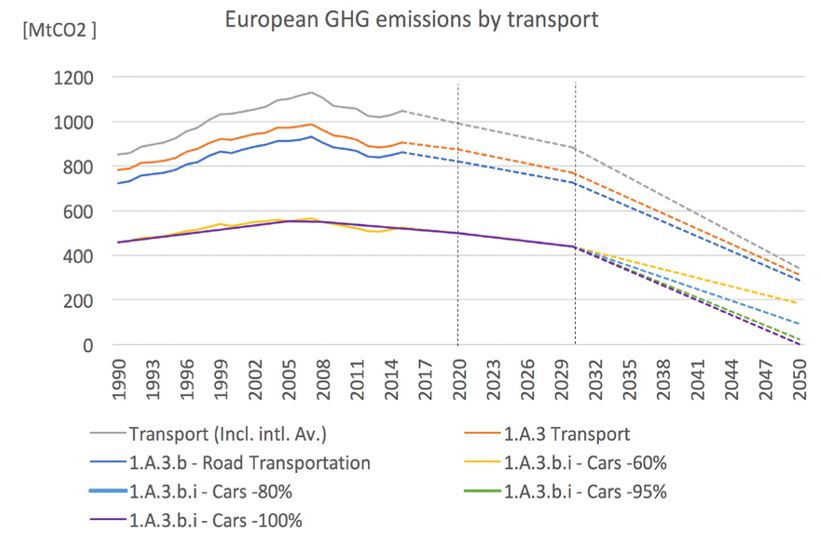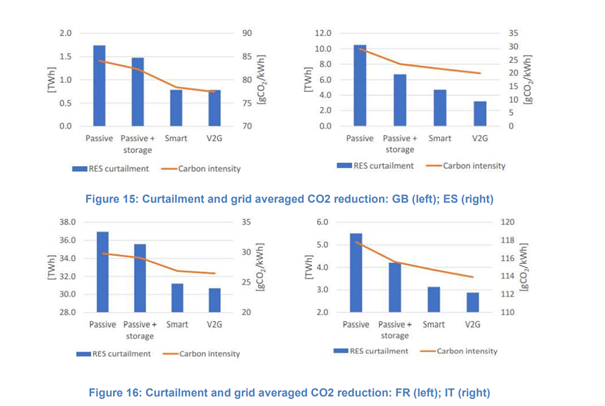The Role of Electromobility in Meeting the EU’s Climate Objectives
It is clear that the transition to electrification, and the promotion of electric vehicle uptake specifically, plays an important role in the reduction of emissions and air pollution. On a global scale, the advancement of electromobility can help countries achieve their overall climate change objectives, such as those agreed upon at COP21 and those envisioned in the European Commission’s Green Deal, which estimates that in order to achieve climate neutrality in 2050, a 90% reduction in transport emissions is needed by 2050.
Given the decarbonisation challenges in airborne and waterborne transport, reaching this ambitious target will require the full decarbonisation of road transport.
Commission estimates show that by 2050, almost all cars will need to be low or zero emissions in order to reach the Green Deal’s aims (Source: European Commission, 2020).





